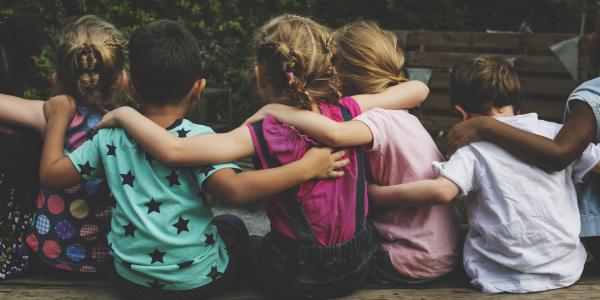Learning from One Another

You are here
I first met Vivian Paley in the early 1990’s when she gave a talk at the University of New Hampshire where I was an instructor and supervising teacher at the university laboratory school for young children. It was also about the time I decided to return to school to earn a doctorate at the age of 40. I had been teaching early childhood students for 10 years but knew that I did not know enough, and I wanted to learn more about teaching early childhood educators. For example, I must confess that I had never read any of Paley’s books and barely knew who she was or what was so special about her. That is, until I heard her describe how she used her recordings, notes, and conversations to listen closely, fully, and carefully to learn more about the children in her classrooms. I searched for more of her writings and was struck by her exclamation that “it is curiosity, not answers, that we model” (1986, 124). It was at that time that I turned direction in my career as a teacher educator. It seemed to me that to learn about how to teach teachers, I had to find ways to make visible their questions, uncertainties, wonderings, and emerging knowledge. When I coupled her work with what I began to learn about pedagogical documentation I knew that my approach to teaching adults could mirror that of a kindergarten teacher who found a way to use the everyday lived experiences of her students to inform her practice.
It is curiosity, not answers, that we model.
Across nearly 30 years since then, I have continued on a journey to find ways to partner with students and teachers by creating contexts of collaborative inquiry in which we learn from one another. For example, just last year, I suggested to twelve Head Start teachers with whom I have worked for several years that we draw upon Vivian Paley’s storytelling and story acting to support their four-year-old children’s early literacy development. Each month, teachers brought children’s stories, drawings, and video recordings of children’s story acting and teacher notes about what they observed to our monthly meetings. While the teachers’ focus was certainly on the development of children’s literacy skills, they began to learn much more than they expected. As one teacher noted, “The most compelling thing about the story telling was our sense of community and the sharing of our stories. This brought us even more together as a class and children learned from other children. We found ourselves in a time and space that we took the time to listen to one another and celebrate that.” Others remarked, “it helped us bond more as a class,” and “I learned that we can become a deeper community through shared experiences.”
Ensure all children’s voices are heard. Everyone wants to be seen and heard.
As storytelling and story acting continued, the teachers pursued their own curiosities about how to continue to support all children’s literacy efforts by creating a process that was kind, safe, and relevant to each child. To this end, they took steps to ensure there was time for all children’s stories, and space to make them visible to the children as well as to teachers in our monthly meetings. As we reflected together at the close of the school year, one teacher remarked, “We saw actors who were once terrified become brave.” Another proclaimed that children “left her classroom feeling independent, proud of their work, competent and great story tellers/authors.” Others believed this outcome was because the “children’s thoughts and feelings were being heard and they were able to safely share with their classmates as a whole.” As a result, while the teachers ended the year knowing more about how to guide children’s emerging literacy skills, they also learned from their own attempts to emulate Vivian Paley’s curiosity and trust in children’s lived experiences to, as one teacher explained, “ensure all children’s voices are heard. Everyone wants to be seen and heard.”
Vivian Paley’s contribution to the field of early childhood education and teacher education is certainly her approach to creating the space and opportunities for children to share their stories through storytelling and story acting, but it is much more. It also portrays the ways in which a pedagogical approach can and should be imbued with a deep respect for, appreciation of, and curiosity about what children already know as a foundation for their future learning, as well as our own.
Vivian Paley's contribution to the field portrays the ways in which a pedagogical approach can and should be imbued with a deep respect for what children know as a foundation for their future learning, as well as our own.
Reference
Paley, V. G. 1986. “On Listening to What the Children Say.” Harvard Educational Review 56 (2): 122-131.
Mary Jane Moran, PhD, is a professor and head of the Department of Child and Family Studies at the University of Tennessee, Knoxville, TN. Mary Jane is an early childhood teacher educator who focuses her initiatives on the development of reflective practice among teachers who participate in communities of practice (CoP). Two examples include a decade-long CoP with Head Start teacher and a cross-cultural CoP focused on toddler teacher practice. [email protected]